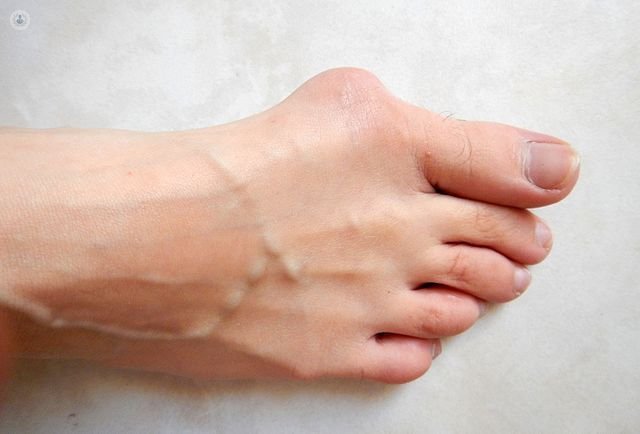Bunions: when do you need to operate?
Written by:Patients with bunions (hallux valgus) usually think to have them surgically removed only when they start experiencing severe pain or because the bunion is causing additional problems, such as hammer toe, metatarsalgia (pain on the sole of the foot) or Morton's neuroma (painful inflammation of a nerve of the sole of the foot). If a foot presents multiple deformities including a bunion, it should always be removed if possible. The big toe acts as a pole that prevents the rest of the foot from collapsing and deforming and if toes are corrected but if the bunion is not removed, the toes will probably deform again. We should only skip this rule for elderly patients in poor health.

Bunion surgery: not only is the bunion removed
Just removing the bunion itself is one of the most serious and frequent mistakes, as in most cases, this does not tackle the root of the problem. The deformity is caused by the deviation of the metatarsal and the toe forcing the bunion to form at the joint. Therefore, the metatarsal and the toe must be straightened out and corrected as well as having the bunion removed. Another common mistake is to operate on both feet at the same time. In most cases, it is recommendable to treat one foot at a time, usually the most painful one first. This way recovery after bunion surgery is faster because the patient can use the other foot normally. If not the recovery time can take twice as long. In the past both were done at the same time because foot surgery was an extremely painful experience, and this was a way for the patient to suffer only once. Today bunion surgery is almost painless due to minimally-invasive techniques, such as percutaneous surgery.
Painless bunion surgery
Today, foot surgery is almost painless thanks to the use of less aggressive surgical techniques such as percutaneous surgery and the methods of anaesthesiologists who use nerve block techniques to achieve numbness, assisted by the use of long-acting anaesthetics. Most patients can now go home on the same day after bunion removal and foot surgery. Current percutaneous surgery allows surgeons to correct approximately 90% of bunions, while the rest require open surgery. These evolved techniques even allow us to use screws (in the most serious cases) and achieve results comparable to open surgery. In addition, the scars are minimal, the postoperative is more enjoyable and pain is minimal. Most importantly, the mobility of the big toe is very good, which makes for a rapid recovery and allows the patient to wear shoes once more with out the added discomfort bunion pain.


